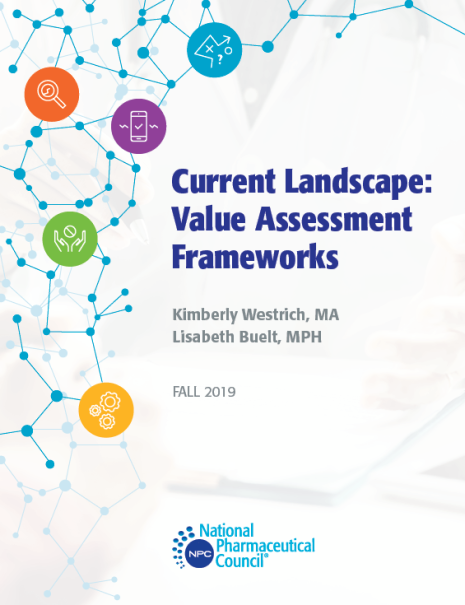By Emily Ortman, SWHR Communications Director
As health insurers and policymakers increasingly embrace the U.S. health care system’s shift toward value-based decision-making, how to define and measure a medical therapy’s value has become a topic of much debate.
 Several organizations have developed new methodologies, or value frameworks, that seek to determine the value of drugs, medical tests, and other health care products or services. With these frameworks becoming more influential in health care decision-making in the United States, the National Pharmaceutical Council (NPC), a health policy research organization, analyzed seven value assessment frameworks.
Several organizations have developed new methodologies, or value frameworks, that seek to determine the value of drugs, medical tests, and other health care products or services. With these frameworks becoming more influential in health care decision-making in the United States, the National Pharmaceutical Council (NPC), a health policy research organization, analyzed seven value assessment frameworks.
The report, Current Landscape: Value Assessment Frameworks, serves as a “level-setting document,” said co-author Kimberly Westrich, NPC vice president for health services research. It looks across the landscape of value assessment frameworks and compares and contrasts them, outlining their strengths and limitations, as well as flagging areas of concern.
The report concludes that there is no “best” framework for determining the value of a health care product. “There are various ways to measure value, and it looks different to different stakeholders,” Westrich said. “It’s not a bad thing that there is no single best framework,” she added. “I don’t think we could ever get to a point where there is one best framework that answers all questions for all stakeholders.”
One of the key concerns that NPC’s report highlights is the lack of focus in value assessment on factors important to patients, stating that: “Frameworks should incorporate the elements that matter most to patients. Patients’ clinical characteristics and preferences vary considerably, and therefore assessments of value should not be one-size-fits-all.”
For example, as SWHR has noted, women have unique needs as patients, caregivers, and health care decision-makers for their families that should be taken into account in value assessments. SWHR recently published a set of principles to help ensure value frameworks and assessments reflect factors relevant to women and the ongoing improvement of their health.
While it may be tempting to look at one assessment on the value of a new drug or medical product and get a single number, “that’s a false sense of precision,” Westrich said. “When a decision-maker is looking to assess value they are going to need to use multiple tools to better capture the breadth of value.”
